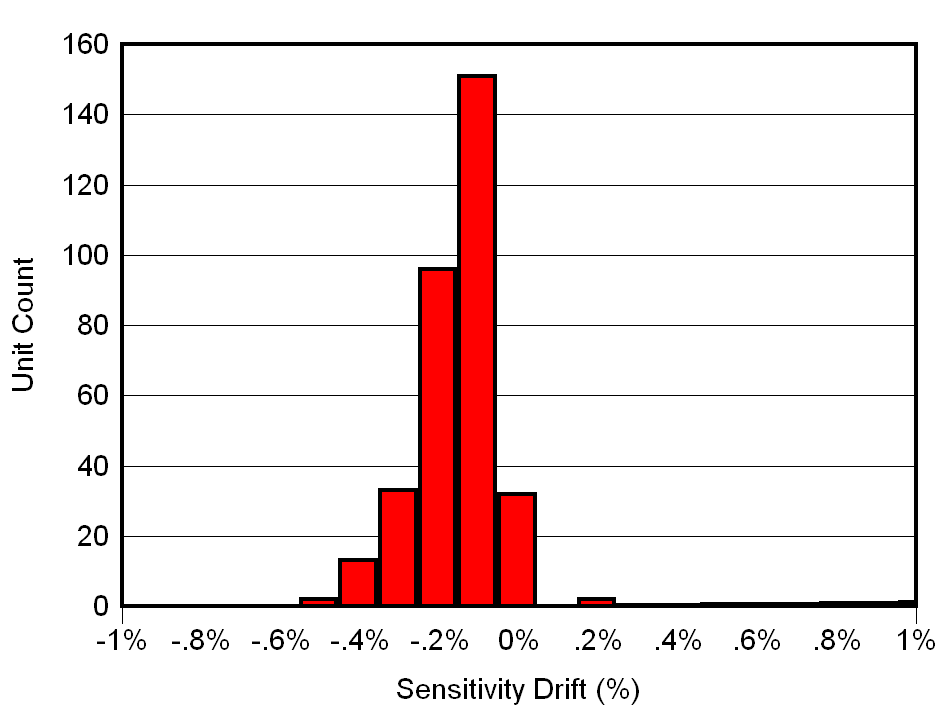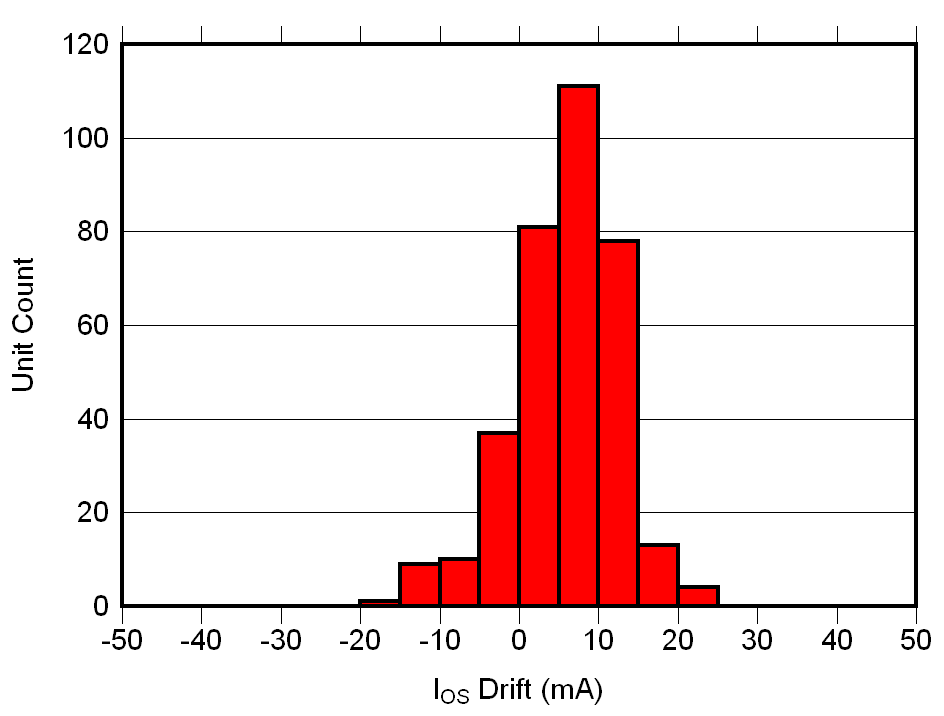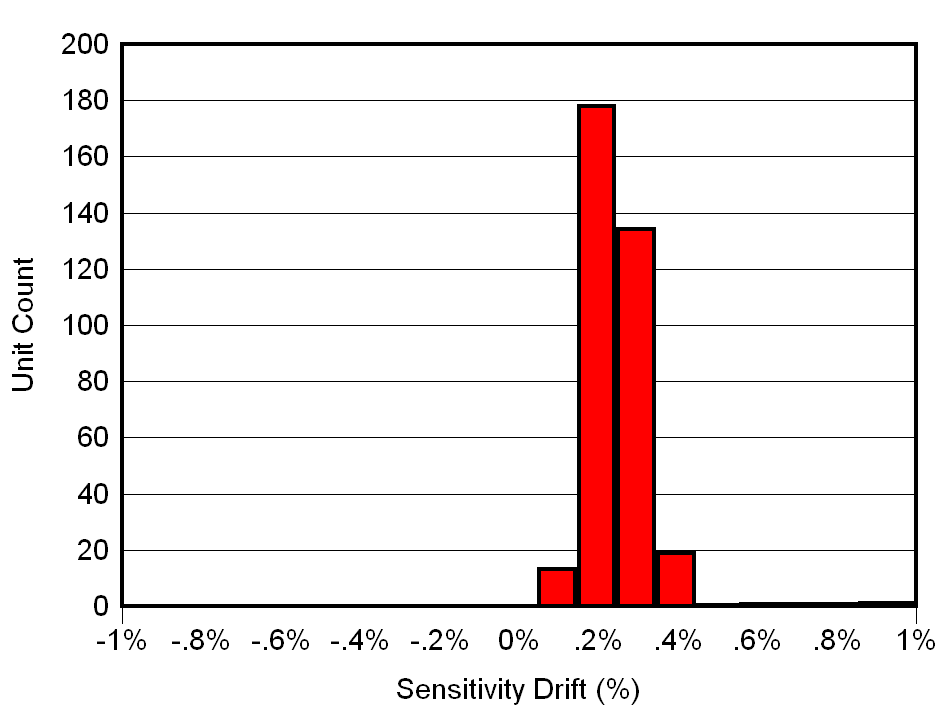ZHCSK83C September 2019 – June 2025 TMCS1100
PRODUCTION DATA
8.3.3.2 寿命和环境稳定性
TMCS1100 中用于降低温度漂移的相同补偿技术也大大降低了老化、应力和环境条件导致的寿命漂移。由于高工作温度下的老化现象,典型的磁传感器会遭受高达 2% 至 3% 的灵敏度漂移。TMCS1100 极大地改善了寿命漂移,电气特性 表针对在三批次 AEC-Q100 认证期间在最坏情况应力测试后测量的总灵敏度误差进行了阐述。AEC-Q100 认证规定的所有其他应力测试产生的灵敏度误差低于指定的值,处于电气特性 表中指定的范围内。图 8-4 显示了在进行最坏情况应力测试(即 130°C 和 85% 相对湿度 (RH) 条件下的高加速应力测试 (HAST))后的总灵敏度误差,而图 8-5 和图 8-6 显示了在进行 AEC-Q100 规定的 1000 小时、125°C 高温工作寿命应力测试后的灵敏度和失调电压误差漂移。该测试模拟了典型的器件寿命操作,表明与典型的磁传感器相比,老化导致的可能的器件性能变化得到了极大的改善。
 图 8-4 130°C、85% RH HAST 后的灵敏度误差
图 8-4 130°C、85% RH HAST 后的灵敏度误差 图 8-6 AEC-Q100 高温工作寿命应力测试后的以输入为基准的失调漂移
图 8-6 AEC-Q100 高温工作寿命应力测试后的以输入为基准的失调漂移 图 8-5 AEC-Q100 高温工作寿命应力测试后的灵敏度误差漂移
图 8-5 AEC-Q100 高温工作寿命应力测试后的灵敏度误差漂移